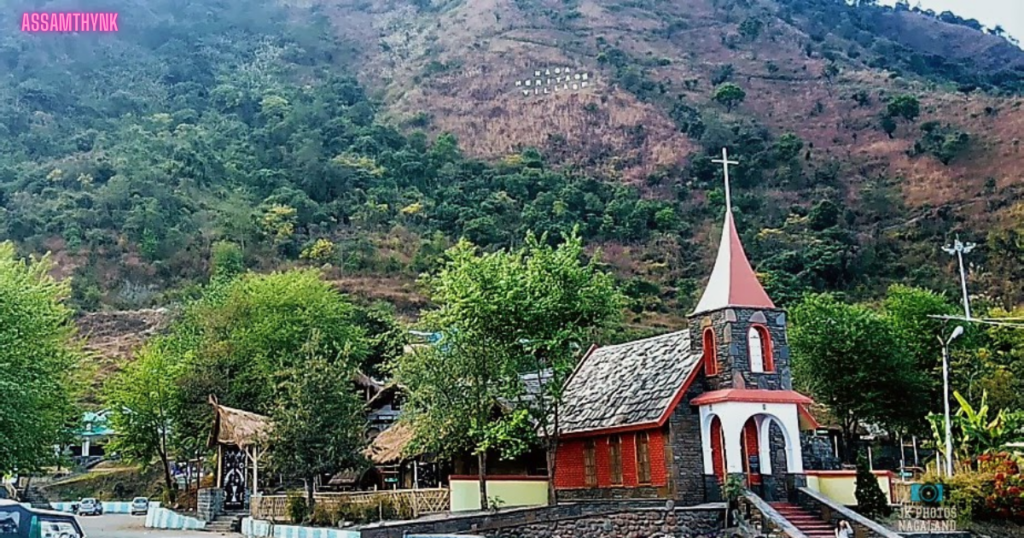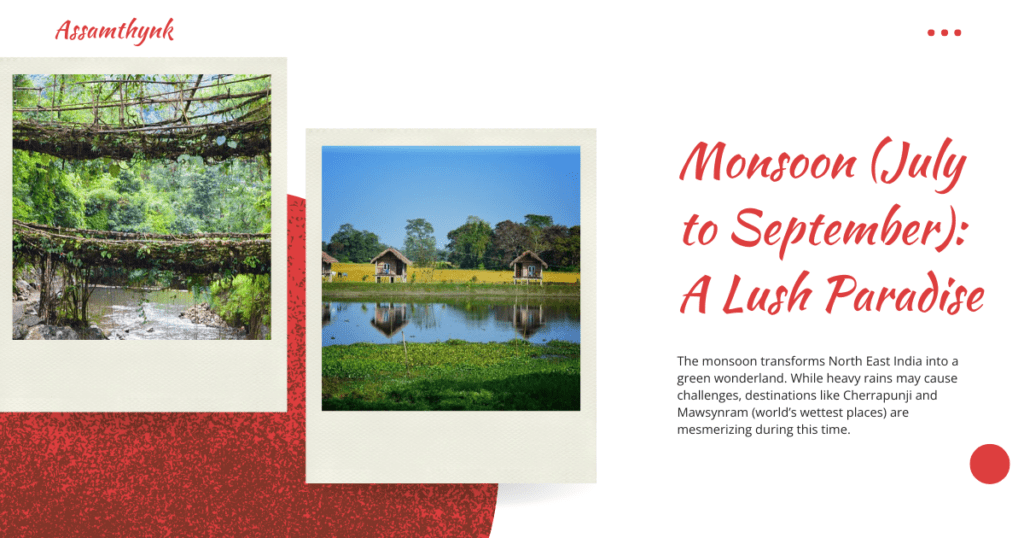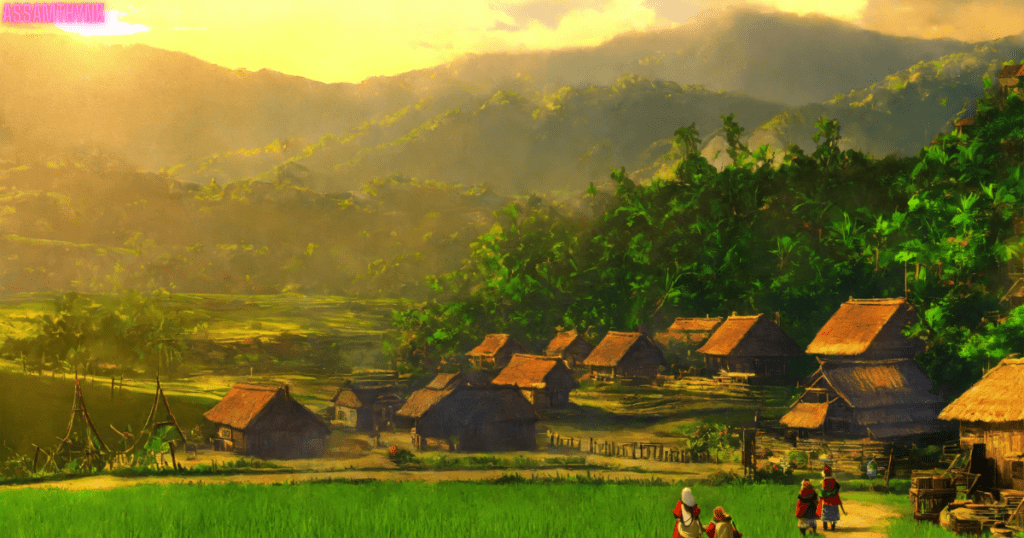Introduction
Nagaland, one of the most vibrant states in Northeast India, is home to a rich tribal heritage that remains preserved in its traditions, festivals, and cultural sites. Among the many landmarks that celebrate this cultural diversity, Kisama Heritage Village stands out as a living museum, offering visitors an immersive experience of Naga culture. Situated about 12 km from Kohima, the capital of Nagaland, this heritage village is the primary venue for the world-renowned Hornbill Festival, an annual celebration that brings together the state’s various tribes to showcase their customs, art, music, and cuisine.
History and Significance of Kisama Heritage Village
Kisama Heritage Village was established by the Government of Nagaland with the aim of preserving and promoting the indigenous traditions of the Naga people. The name “Kisama” is derived from two nearby villages, Kigwema and Phesama, which contribute to the cultural and social fabric of the region.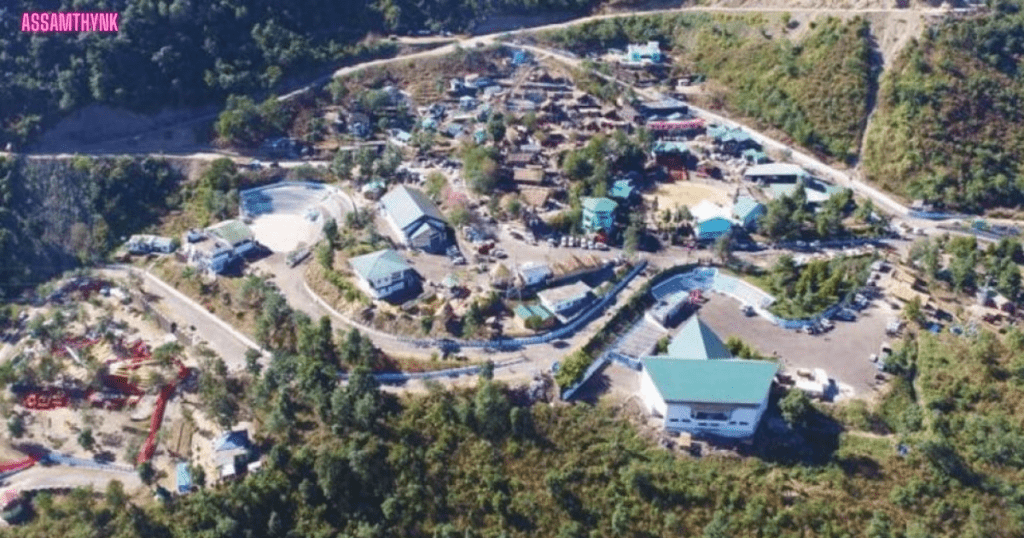
Nagaland is home to 16 officially recognized tribes, each with its own language, customs, attire, and traditions. Over time, modernization and external influences have led to changes in traditional lifestyles. To prevent cultural erosion, the heritage village was designed as a living cultural hub, where visitors can experience Naga traditions in an authentic setting.
The village serves as a bridge between the past and the present, offering both locals and tourists an opportunity to engage with Naga heritage through its architecture, performances, handicrafts, and culinary delights.
Why Visit to Kisama Heritage Village
Kisama Heritage Village is a must-visit destination for those wanting to experience the rich culture and traditions of Nagaland. It is the venue for the famous Hornbill Festival, held every December, where visitors can witness vibrant tribal dances, folk music, traditional crafts, and local delicacies. The village beautifully showcases the lifestyle of different Naga tribes through traditional huts and cultural exhibits. Surrounded by scenic hills, it also serves as a gateway to nearby attractions like Dzukou Valley and Khonoma Village. Whether for cultural exploration or adventure, Kisama Heritage Village offers an unforgettable glimpse into Nagaland’s heritage and hospitality.
Key Attractions of Kisama Heritage Village
1. Hornbill Festival: The Festival of Festivals
The biggest draw of Kisama Heritage Village is the Hornbill Festival, held annually from December 1st to 10th. Named after the Great Indian Hornbill, a bird deeply respected in Naga folklore, the festival was initiated in 2000 by the Government of Nagaland to encourage cultural exchange and boost tourism.
During the festival, the entire village comes alive with traditional dances, indigenous games, folk music, and craft exhibitions. It provides a platform for Naga tribes to showcase their unique customs and offers visitors a firsthand experience of the state’s vibrant cultural heritage. The festival also includes:
- Traditional Wrestling and Archery Competitions
- Naga Morung Display – Showcasing tribal dormitories with distinct architectural styles.
- Rock Music Concerts – Featuring national and international bands.
- Hornbill Night Carnival – A lively street market with local food, souvenirs, and entertainment.
- King Chilli Eating Contest – Featuring the famous Naga Ghost Pepper (Bhut Jolokia), one of the spiciest chilies in the world.
- Fashion Shows and Art Exhibitions – Highlighting contemporary Naga art and attire.
2. Morungs (Tribal Huts)
One of the most fascinating aspects of Kisama Heritage Village is the display of traditional morungs (tribal huts or dormitories). Each of Nagaland’s tribes has its own distinctive architectural style, reflecting their cultural identity. The morungs serve as a representation of the traditional education system of Naga society, where young boys were trained in warfare, woodcraft, and social responsibilities. These huts are decorated with horns, spears, shields, wooden carvings, and other tribal symbols, offering a glimpse into Naga craftsmanship and heritage.
3. The World War II Museum
Nagaland played a significant role in World War II, especially during the Battle of Kohima (April–June 1944), which was a turning point in the Burma Campaign. The World War II Museum in Kisama Heritage Village houses photographs, artifacts, weapons, and historical documents related to the battle. The museum is a tribute to the soldiers who fought in the war, highlighting Nagaland’s historical importance beyond its cultural heritage.
4. Bamboo Pavilion and Local Handicrafts
Nagaland is renowned for its exquisite handicrafts, textiles, and bamboo products. The Bamboo Pavilion in Kisama Heritage Village serves as a marketplace where local artisans display their craftsmanship. Visitors can purchase:
- Handwoven shawls and mekhalas (traditional Naga attire)
- Bamboo and cane furniture
- Hand-carved wooden artifacts
- Beaded and metal jewelry
- Traditional Naga knives and spears
The pavilion is also an excellent place to observe artisans at work, as many craftspeople demonstrate their techniques on-site.
5. Naga Cuisine: A Gastronomic Delight
A visit to Kisama Heritage Village is incomplete without indulging in authentic Nagaland dishes. Food stalls in the village offer traditional dishes such as:
- Smoked Pork with Bamboo Shoot – A staple dish in Naga households.
- Axone (Fermented Soybean) Dishes – Known for their strong aroma and unique taste.
- Galho – A traditional rice porridge made with vegetables, meat, and fermented soybeans.
- Zutho – A local rice beer enjoyed during celebrations.
- Hinkejvu – A nutritious soup made with colocasia leaves, mustard greens, and beans.
- Bamboo Steamed Fish – A delicacy prepared with minimal spices to retain natural flavors.
For those who enjoy spicy food, Kisama offers a chance to taste Bhut Jolokia (Ghost Pepper), one of the world’s hottest chilies.
How to Reach Kisama Heritage Village
Kisama Heritage Village is well-connected to Kohima, which serves as the gateway to this cultural hub. Here’s how to get there:
- By Air: The nearest airport is Dimapur Airport (75 km), which has flights from major cities like Kolkata and Guwahati. From Dimapur, one can take a taxi or bus to Kohima.
- By Rail: Dimapur Railway Station is the nearest railhead, with trains from cities like Guwahati and Kolkata.
- By Road: Kohima is accessible via NH2, and Kisama is just 12 km from Kohima, easily reachable by taxi or local transport.
Best Time to Visit Kisama Heritage Village
The Best Time to Visit Kisama Heritage Village in Nagaland is during the Hornbill Festival, held annually from December 1 to 10. This is when the village comes alive with vibrant cultural performances, traditional Naga dances, folk music, and indigenous food. The cool and pleasant weather in December makes it ideal for exploring the heritage village and experiencing the rich traditions of Nagaland.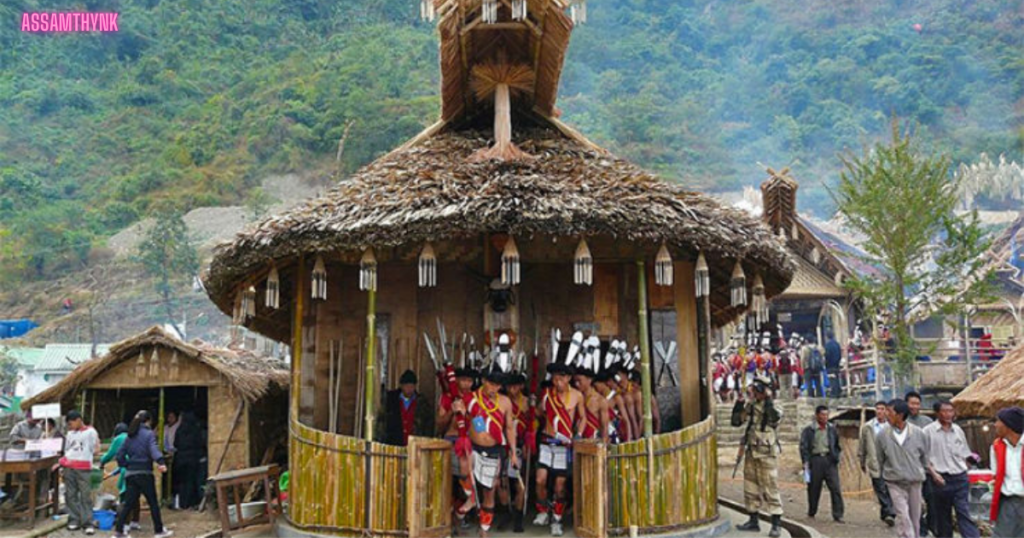
For those planning a broader trip, the Best Time to Visit Nagaland is between October and April when the weather is comfortable, and various festivals take place. Similarly, the Best Time to Visit North East India is during these months, as the region enjoys clear skies and scenic beauty. Avoid visiting during the monsoon (June to September) due to heavy rains and travel disruptions. Whether for cultural exploration or nature’s charm, winter is the perfect season to visit Kisama Heritage Village.
Near Attractions of Kisama Heritage Village
Kisama Heritage Village, located near Kohima in Nagaland, is a cultural hub known for hosting the famous Hornbill Festival. Apart from exploring the rich Naga traditions at Kisama, visitors can explore several nearby attractions that offer breathtaking landscapes, historical significance, and adventure opportunities.
1. Dzukou Valley
One of the most spectacular attractions near Kisama Heritage Village is Dzukou Valley, often called the “Valley of Flowers of the Northeast.” Located around 25 km from Kohima, this enchanting valley is famous for its lush green meadows, seasonal wildflowers, and serene trekking trails. The valley, situated at an altitude of 2,452 meters, offers stunning panoramic views, making it a paradise for trekkers and nature lovers. The best time to visit Dzukou Valley is between October and April when the weather is pleasant, and the flowers bloom in vibrant colors.
2. Kohima War Cemetery
A significant historical site near Kisama is the Kohima War Cemetery, a memorial dedicated to soldiers who fought in the Battle of Kohima during World War II. This beautifully maintained cemetery, located in the heart of Kohima, offers a peaceful atmosphere and stunning views of the city. It is a must-visit for history enthusiasts interested in the region’s past.
3. Khonoma Village
Just 20 km from Kisama, Khonoma Village is known as India’s first green village. This picturesque Naga village is surrounded by lush terraced fields and dense forests, offering an eco-friendly experience. Visitors can explore the traditional Angami way of life, historical sites from the Anglo-Naga battles, and local handicrafts.
4. Pulie Badze Wildlife Sanctuary
For wildlife lovers, Pulie Badze Wildlife Sanctuary, located near Kohima, is a great place to explore. The sanctuary is home to diverse flora and fauna, including the Blyth’s tragopan, a rare bird species. A trek to Pulie Badze peak offers breathtaking views of Dzukou Valley and surrounding landscapes.
5. Japfu Peak
Adventure seekers can trek to Japfu Peak, the second-highest peak in Nagaland. Located close to Kisama, this peak offers stunning sunrise views and is home to the world’s tallest rhododendron tree.
Travel Tips
- Book Accommodation in Advance: During the Hornbill Festival, hotels in Kohima fill up quickly. It’s advisable to book early.
- Respect Local Customs: Nagaland has a deeply rooted tribal culture. Dress modestly and always ask for permission before clicking photographs.
- Try Local Food: Be adventurous and sample traditional dishes; they offer a unique taste of Naga heritage.
- Carry Warm Clothes: December can be quite chilly in Nagaland, so pack accordingly.
- Use Local Transport: Shared taxis and buses are available for travel between Kohima and Kisama.
Top 10 FAQs About Kisama Heritage Village
- What is Kisama Heritage Village?
Kisama Heritage Village is a cultural site near Kohima, Nagaland, known for preserving and showcasing the traditions, lifestyle, and architecture of various Naga tribes. It is the main venue for the famous Hornbill Festival. - Where is Kisama Heritage Village located?
Kisama Heritage Village is situated about 12 km from Kohima, the capital of Nagaland, on the Kohima-Imphal road. - What is the best time to visit Kisama Heritage Village?
The best time to visit Kisama Heritage Village is in December, especially from December 1 to 10, when the Hornbill Festival is celebrated. However, October to April also offers pleasant weather for visiting. - What is the Hornbill Festival, and why is it celebrated at Kisama Heritage Village?
The Hornbill Festival is Nagaland’s biggest cultural festival, held annually at Kisama Heritage Village. It celebrates the rich traditions of Naga tribes through folk music, dance, indigenous crafts, and local cuisine. - How can I reach Kisama Heritage Village?
- By Air: The nearest airport is Dimapur Airport (74 km away). From Dimapur, you can hire a taxi or take a bus to Kohima.
- By Train: The nearest railway station is in Dimapur.
- By Road: Kohima is well-connected by road, and local taxis or buses can take you to Kisama.
- Is there an entry fee for Kisama Heritage Village?
Yes, there is a nominal entry fee during the Hornbill Festival. Ticket prices may vary depending on the events and activities included. - Are there accommodations near Kisama Heritage Village?
Yes, Kohima has several hotels, homestays, and guesthouses. Some visitors also choose to stay in camps set up near Kisama during the Hornbill Festival. - What are the top attractions near Kisama Heritage Village?
Nearby attractions include Dzukou Valley, Kohima War Cemetery, Khonoma Village, Japfu Peak, and Pulie Badze Wildlife Sanctuary. - What local food can I try at Kisama Heritage Village?
During the Hornbill Festival, you can try traditional Naga dishes like smoked pork, bamboo shoot curry, fermented soybeans, and Zutho (Naga rice beer). - Can I buy souvenirs at Kisama Heritage Village?
Yes, visitors can buy handcrafted souvenirs such as bamboo products, Naga shawls, beaded jewelry, and tribal artifacts from the stalls set up during the festival.
Conclusion
Kisama Heritage Village is more than just a tourist destination—it is a symbol of Naga identity and cultural preservation. Whether you’re attending the Hornbill Festival, exploring tribal morungs, or indulging in traditional cuisine, the village offers an authentic and unforgettable experience of Nagaland’s heritage. For travelers seeking to explore the indigenous cultures of Northeast India, Kisama Heritage Village is a must-visit destination that beautifully blends history, tradition, and hospitality.

